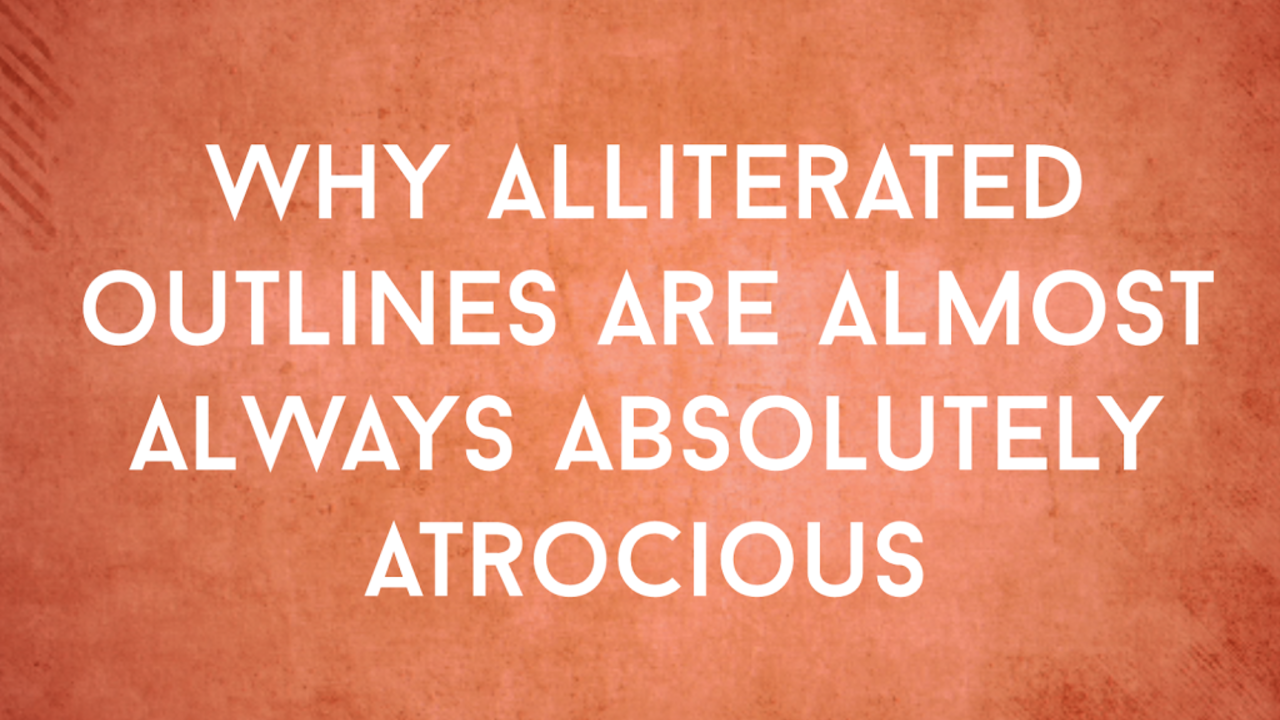Why Alliterated Outlines are Almost Always Absolutely Atrocious

Some preachers alliterate their outlines making all their points begin with the same letter. Sometimes just the main points are alliterated, other times the sub-points are alliterated, still other times the sub-sub-points are alliterated. At one point it was taught as a great way to organize your message and really get your listeners to remember. To make it stick, alliterate! was the mantra. But we don’t see as much alliteration anymore. But does it make a difference? Alliterate or not, does it matter?
Here’s why alliterated outlines are almost always absolutely atrocious:
1. They make your message seem contrived. Alliterated outlines can appear contrived and forced. Like the preacher just needed a matching, neat outline so he grabbed whatever word fit the others regardless of whether it was actually the best word that communicated the meaning he wanted. Like this:
God wants three things from you:
1. Surrender2. Service3. Supplication (Seriously? “Prayer” would work just fine here more people would know automatically what it means)
A genuine disciple is:
1. Committed to a pure life.2. Consistent in their personal life.3. Constrained by the purpose of life.4. Convinced of their position in life.
In addition to seeming painfully contrived, this is a complicated mess to navigate through. If we can learn anything from companies like Google, simplicity rules the day. A wordy, crowded, alliterated outline makes it difficult to navigate what is most important for your listeners to remember.
If you were preaching on three ways God wants us to love him your outline could be Head, Heart and Hands. “God wants us to love him with our minds (head), he wants our full emotions (heart), and he wants us to serve him (hands).” It’s simple and could be very useful to your listeners.


